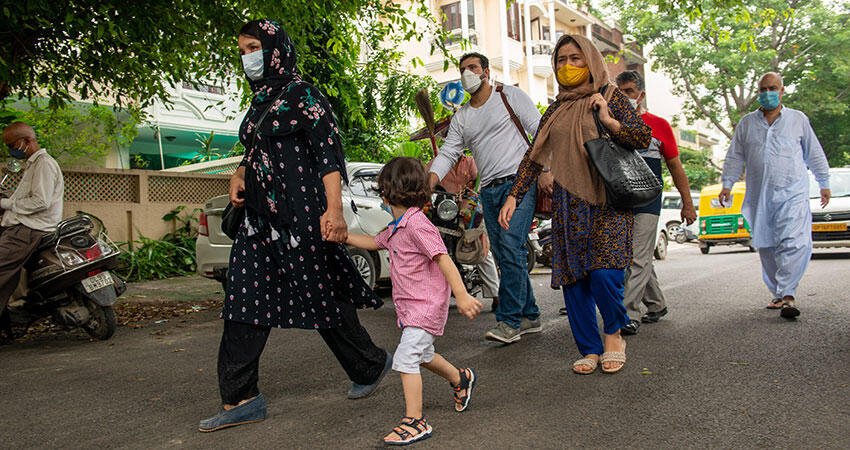
PradeepGaurs/Shutterstock
To Improve Refugee and Climate Resettlement Efforts, Cities Can Address the Affordable Housing Crisis
The American military withdrawal from Afghanistan prompted an exodus of more than 50,000 Afghan people who have arrived in the United States over the past month. Despite temporary funding for resettlement, US cities do not have enough affordable and available homes for these families.
This challenge may seem unique, but as climate disasters worsen, more and more climate migrants and cities will find themselves in a similar situation. Past resettlement efforts in the US and internationally offer lessons for cities tackling displacement and trying to house an unexpected influx of residents.
Many cities aren’t equipped to house refugees
In cities across the country—not just those known for their high housing costs—Afghan refugees face difficulty finding homes. Though cities with tight housing markets, such as Sacramento and Washington, DC, cannot provide sufficient housing, this is also true in regions like Albany, Charlotte, Des Moines, Omaha, and Salt Lake City.
And despite receiving federal assistance (most refugees are eligible to receive about $2,275, of which $1,225 is intended to cover direct assistance for 90 days), many refugees still struggle to find and afford available units because of the affordable housing crisis.
Rental vacancy rates are the lowest they've been since the 1980s, meaning there are simply not enough apartments available to rent. This drives up rental costs. On top of this, inflation-adjusted rent prices have been steadily rising for years, with the national median rent reaching $1,302 in September. That price is well out of reach given the limited federal assistance and how challenging it can be for refugees to establish sufficient income in a new region.
The US Department of Homeland Security is encouraging Afghan families to move to parts of the country where their aid can go further, specifically areas with a reasonable cost of living and more available housing. This, however, will not solve the challenge, as most metropolitan regions are currently facing an affordable housing crisis.
Lessons from around the world can inform future resettlement response
Past resettlement efforts in America and internationally provide opportunities for cities and communities to better meet the needs of new arrivals, whether driven by global conflict or disasters spurred by climate change.
- Cities can invest in closing information gaps (PDF) through community-based information exchanges (PDF) and formal housing market information programs housed in public buildings. Resource networks can direct people facing housing instability toward assistance and support. The Wohndrehscheibe in Vienna offers a helpful model (PDF) of an information service.
- Cities and supportive service agencies can build emergency response collaboratives to help regions form and implement a plan to respond to urgent needs. Neighbors United is a partnership between the Boise mayor’s office and the Idaho Office for Refugees with representatives from health, education, and justice institutions. This group provides a platform for different institutions to regularly identify and plan for the refugee community’s needs.
- Local funders and government agencies can establish insurance or incentive funds to encourage landlords to be more flexible in their rental properties. A resettlement model in Brussels (PDF) used a privately funded investment pool to encourage landlords to make their rental stock more affordable. In the US, Denver, Colorado; Orlando, Florida; Portland, Oregon; and Seattle, Washington, have used risk-mitigation funds.
- States, counties, and cities can pass source of income (SOI) laws (PDF), which aim to encourage landlords to accept vouchers or other forms of income. Early studies show promising effects once SOI laws are in effect.
- Federal assistance could be locally scaled, such that costs for housing and resources are slightly higher in areas where the average costs for housing and self-sufficiency are higher.
- The most critical long-term solution requires an increase in the inventory of affordable housing. Hamburg, Germany, after opening its borders to Syrian asylum seekers, added more than 17,000 beds in its public housing system in just two and a half years by expanding existing institutional capacity and expertise. They relied on (PDF) strong political leaders, tax breaks, and new land-use policies to quickly complete housing construction.
Failure to act undermines the ability of arriving families to achieve financial security and provide a foundation for long-term success in the US. As climate disasters and other events increase, cities will need to build regional resilience. This starts with ensuring available, affordable housing.


